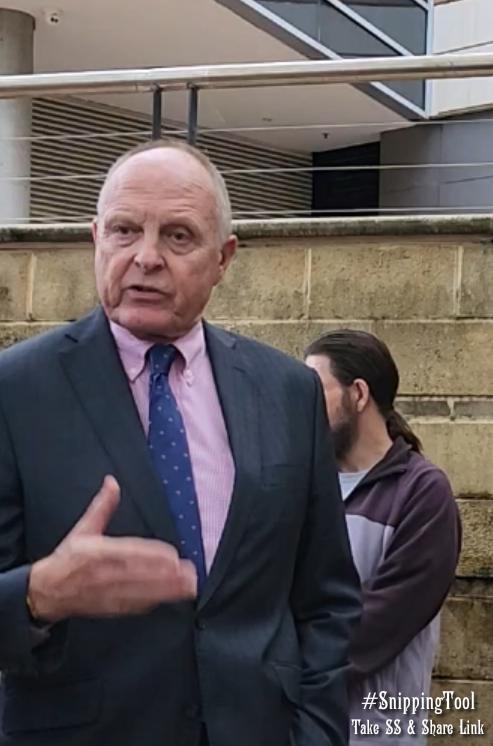Administrator Rik Hart, in his post-May council meeting interview with The Point, explained that the community will have another opportunity, within 12 months, to comment on how council staff want to categorise 286 lots of community land.

By Jacquelene Pearson
According to Rik Hart, of the approximately 2500 parcels of community land that were part of the recent community consultation, there was only commentary on 14 per cent.
“We received 343 submissions of which there were 286 objections, so for 86 per cent of the lots the community were in agreement because nobody made any comment on them,” Mr Hart said.
“What I suspect some people didn’t quite realise was that 22 lots were withdrawn [from the recategorization process] and the reason they were withdrawn was that if we had gone ahead with that it would have created a problem with how council could manage the land,” he said.
Let’s recap as this has been a long and complicated consultation which started before Christmas 2022.
Central Coast Council announced that it needed to review the plans of management which governed the way it managed and used community land. It also announced that a schedule including over 2000 lots of community land would be exhibited, along with a new draft plan of management.
The community was given the opportunity to comment on both the proposed draft plan of management and on the council staff’s proposed categorization of each parcel of land.
We are talking about public land that is owned by council. When a council owns land it has to be classified as operational or community. Community land is deemed to be of value to the community so it is not allowed to be sold. It includes our parks, playing fields and natural areas. Operational land, on the other hand, can be sold without a great deal of community consultation.
Once public land is classified as community land it then needs to be categorised. The category chosen determines how it needs to be managed and used. Each category of community land must be managed in accordance with key objectives that are specified in the NSW Local Government Act.
The key objectives determining how a council has to manage Natural Areas (bushland, wetland, escarpment, escarpment, watercourse and foreshore) are much more strict than those that apply to how a council is required to manage a park or areas categorised as “general use”.
At the April Central Coast Council meeting, Mr Hart said, “I must acknowledge that large number of emails and comments my office has received over the last couple of days and I have looked at them.”
He then invited Dr Alice Howe, Director of Environment and Planning, to give an overview of the agenda item. Dr Howe told the meeting the report sought to finalise a Plan of Management for council owned community land.
She explained that the permissible uses for different categories of community land are to be described in a plan of management in line with the Local Government Act.
Dr Howe said any parcel of community land “can only be used for a stated purpose if it is in a category of land that permits that use.”
She said the new generic plan of management that staff recommended the administrator adopt replaced over 20 outdated plans of management and she thanked her team for the time they put in to bringing the plan of management “up to contemporary standards”.
She said once the plan of management was published “more guidance” would be provided in non-statutory plans and strategies.
Dr Howe also said under Section 40 of the Local Government Act it was not permissible to change the category of a parcel of land without repeating the public consultation process.
Mr Hart then told the meeting: “Of the approximately 2500 lots that were out there, people commented effectively on only 286.
“On the balance there was no comment on whatsoever, the majority went through without anyone making any comment on,” he said.
However, those emails Mr Hart referred to appear to have encouraged him to give the community another opportunity “to talk about in more depth the issues they have raised in this consultation phase.
“I am going to add another resolution into the recommendation whereby for those 286 parcels where we received a lot of comment, I have asked staff go out and look at them, take on board the comments that have been made and re-release those comments for another round of consultation.”
Mr Hart added a seventh point to the resolution recommended by the council staff: “Note that categorisation of parcels included in the objection report will be reconsidered as part of review which will be reconsidered in the next 12 months.”
In the post-meeting interview Mr Hart said: “There is another part of the project, Council will look at those parcels of land where there were objections and they will put out a revised plan of management. What I resolved last night made that clear.”
Mr Hart said staff were talking about not reviewing the plan of management or any of the parcel categories for a couple of years but he insisted a review needed to be held within 12 months.
“It is a repeat of the process. If there is any change made by staff to something then it has to go out to consultation. You could have something go on for some time on that basis.”
The review within 12 months will include the 22 lots withdrawn from the resolution altogether and the 264 other lots for which council received objections to their proposed categorisation. The Point can report that most of those objections were from community members who wanted parcels categorised as Natural Areas whereas staff wanted them categorised as parks, sporting field or general use. The categories preferred by council staff would open the parcels up to a broader range of uses and less protection than if they were categorised as natural areas.
Mr Hart said the adoption of the new generic plan of management was necessary to give organisations certainty about their leasing and licensing arrangements.
“A good example is the Pearl Beach Arboretum which can’t get a longer term lease in place to get funding to take care of the Arboretum until it has a long-term lease from the council and that couldn’t happen without the plan of management.”
He gave other examples, including the Kariong Eco Garden and Gosford pre-school – of organisations waiting for the new plan of management so they could be given long-term leases which “enables those entities to apply for grants with security. So that is why the urgency is there. The other thing I found quite extraordinary is that we found over 600 lots that had never been categorised. Obviously the previous councils hadn’t had an interest in it or hadn’t put it up.
“A council needs to stay on top of this because it changes every year. It must be categorised if it is community land.”
Mr Hart said he believed the plans of management and categorisation of community land owned by council had not been reviewed for “some years, maybe decades”.
He said the next step in ensuring the efficient management of community land in the future would be to introduce other strategies and master plans which may be incorporated into the community land plan of management.
“We need to get the strategies done and a good example is the active lifestyle strategy, that is the sort of strategy that has to come into play and once that has been agreed it may be incorporated into a plan of management at a later date. And that is the stuff that we are now starting to do.”
Community groups maintain that the new plan of management is not good enough, particularly in terms of what they call the mis-categorisation of parcels of bushland into other categories and the generic nature of the new plan of management.
Community campaigner, Joy Cooper, said during the Public Forum before the council meeting that she had “Looked at current plans of management from other local government areas and I have not found one as shallow or flimsy [as the draft plan of management Mr Hart went on to adopt].
“What happened to the plan of management for the Gosford Council Building. Have you been to Blackwall Mountain, if not how can you be sure it doesn’t need its own plan of management? I can fill my three minutes with a list of sites incorrectly categorised,” she said.
Ms Cooper gave several examples of parcels she believed had been incorrectly categorised by staff: Copacabana sand dunes not categorised as foreshore, Wyong Golf Course, other sites categorised as parks rather than natural areas.
Mark Ellis spoke on behalf of the Central Coast branch of the Australian Conservation Foundation.
He said he did not think it was appropriate that the project had been overseen by the unit within council which had already sold $71m worth of public assets.
He called it a tick-box exercise to give long-term licenses and leases for community land.
“Many people were wondering how this will result in the opening up and exploitation of bushland…The report acknowledges and thanks CC residents for their input although it was ignored.”
He questioned how 35 pages of changes suggested by the community had been “rejected by the commercial property unit”.
Mr Ellis said the Blackwall Mountain PoM, should be retained as a stand alone PoM.
“Austin Butler [Woy Woy] is another area that is very complex, with various different sections, a plan of management should be adopted for the protection of the threatened species in that area. There is a recovery plan for the flying foxes of that area,” he said.
“A cut and paste document does not give justice to the land this is serving. As administrator you should speak up and not just rely on the property people whose role is to make money,” Mr Ellis said.


